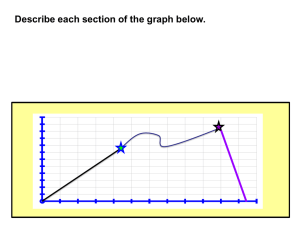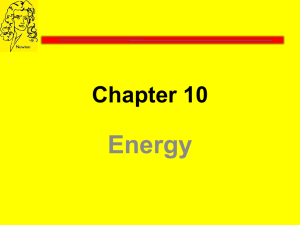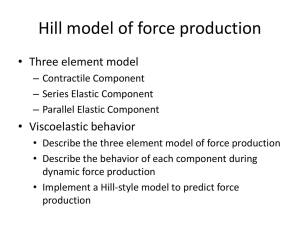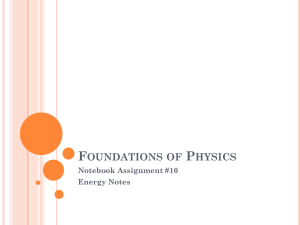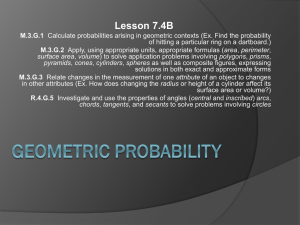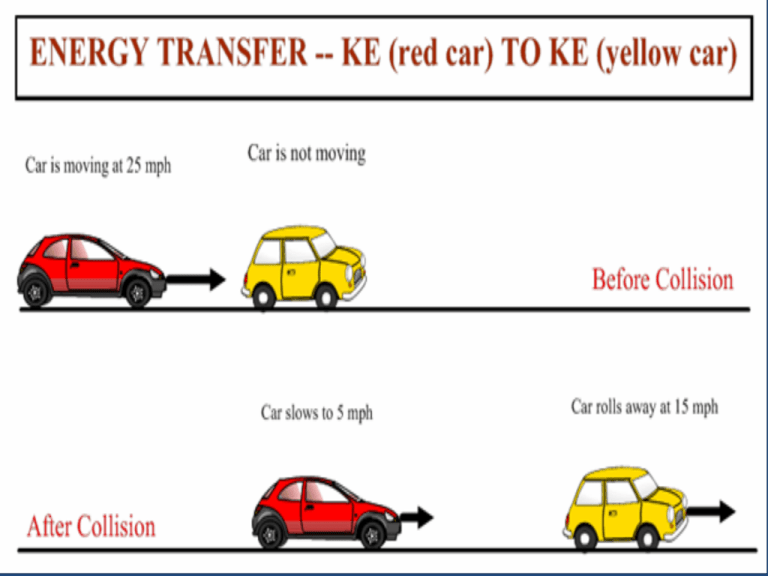
Forces That Transfer
Energy Making Crash
Barriers
Crumple Zones
Collapsed Crumple Zone
Good Crumple Zone
Investigating How Forces Transfer Energy
Part A: Creating a Barrier
Focus Question: What barrier design
will stop the car in the shortest distance?
Your task is to create a stopping barrier out of dominoes
that will stop the car in the shortest distance possible.
Your Mission…
1. You will answer the pre-lab questions
(1-4) BEFORE you start the lab.
2. Practice three or four times before
you record your trials.
3. You will stack the dominos at the 60cm
mark on the ramp.
4. Draw your design in your table.
5. Record the distance in cm from the 60cm mark
to the first domino.
6. If your dominos touch the end wall, your trial
doesn't count!
7. You can not have any dominos touching the black
wall at the end of ramp.
Design your Drawing
3
3
3
2
2
1
1
Draw your design as if you were looking down
at it from above.
Place numbers in the blocks if you stacked
more than one on each other.
Data Table
Trial
#
1
2
3
4
5
# of blocks Draw a basic
Stopping
used
barrier design distance (cm)
Pre-Investigation Questions
• Question #1: What form of energy is present
when the car is sitting at the top of the ramp?
How do you know this?
• Question #2: What will happen to the energy of
the car as it moves down the ramp? What
evidence could you collect to justify your answer?
• Question #3: When the car strikes the barrier
what will happen to the energy of the car? How
do you know this?
• Question #4: Let’s assume we release the car
from rest at the top of your ramp. What can you
do to be sure that the car strikes your barrier
with the same KE in each trial? Explain.
Conduct your Investigation
Record your results carefully and be prepared to
report to the class the design of your barrier
that stopped the car in the shortest distance by
exerting the largest stopping force and the
answers to the questions asked below.
Question #5: What forces are causing the car
to stop?
Question #6: Why is the stopping distance
shorter for some arrangements of blocks than
for other arrangements?
A child is playing with a toy dart gun. The dart is inserted
into the barrel and it compresses a spring. When the
trigger is pulled, the spring forces the dart out of the gun.
Carefully read each of the following statements about the
scenario and write the statement that you agree with.
1.The spring inside the dart gun is elastic.
2.The energy stored in the compressed spring is the same as the weight
of the dart that caused the spring to compress.
3. If the spring is compressed twice as far, the dart will go twice as far.
4. If the spring is compressed twice as far, the dart will go twice as fast.
5. The energy stored in the compressed spring is a type of potential
energy.
Elastic Potential Energy
Elasticity is the ability of an object to be
deformed from its original shape by a force and
return to its original shape.
(When an object’s shape is changed it can be
returned back to it’s original shape)
What does deformed mean?
A change in the shape or size of an object due to
an applied force, such as the stretching of a spring
or rubber band.
Can you thin k of any other examples of
Elastic PE?
Bow and Arrow, Sling Shot, Balloons
Elastic Potential Energy
Elastic Potential energy can be
determined from the objects stretch
squared and the constant that reflects
the elasticity of the material. So what’s
this mean in English?
Elastic EPE= 1/2kx2
Elastic Potential Energy
Elastic PE= 1/2kx2
K=spring constant N/m
X= amount stretched
or compression
Ex: (stretched spring,
pulled rubber band)
Elastic PE is measured
in Joules N/m x m
(Kg x m/s2 x m)
Elastic Potential Energy
Problem
Remember…
K= 100 N/m
Elastic PE= 1/2kx2
2
50 N/m
The elastic force
2
X=(.5m)
constant stored in a
drawn bow is 100 N/m.
.25m
The bow is drawn to pull
the arrow back a
distance of 0.5 meters. 50 N/m x .25m
Calculate the elestic
EPE =12.5 J
potential energy stored
in the drawn bow.
In DUFAS
Elastic Potential Energy
Problem
The elastic force
constant of a spring in
a toy is 550 N/m. If
the spring is
compressed .12 m,
compute the elestic
potential energy stored
in the spring.
In DUFAS
K= 550 N/m
2
X=(.12m)2
275 N/m
.0144m
275 N/m x .0144m
EPE =3.96 J
SAFER Crash Barriers
An excellent application of these concepts is the “soft
walls” used by major racing facilities across the nation
(Dover International Speedway being one of these). The
new SAFER (Steel And Foam Energy Reduction) barriers
have revolutionized the sport of automobile racing and
made it much safer for both the drivers and the fans.
So how do SAFER barriers absorb energy?
The barriers move upon impact so that the KE of the car is transferred to a very
large area of the wall (a large portion of the wall flexes upon impact). The key idea
is that no one portion of the wall receives a large amount of the car’s KE. The KE
of the flexing soft wall is then transferred to the outer permanent wall and support
structure. The materials that make up the wall are not elastic.
Imagine what the collision would be like if the wall was elastic! Still other portions
of the car’s initial KE are transformed into heat energy and sound energy.



